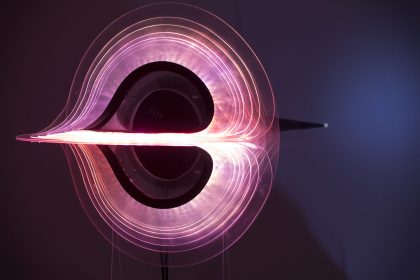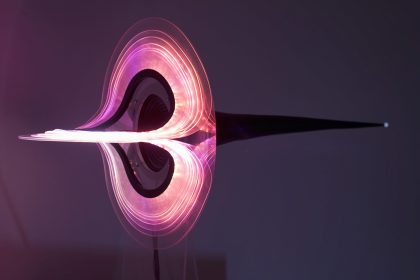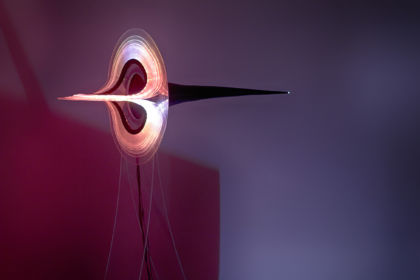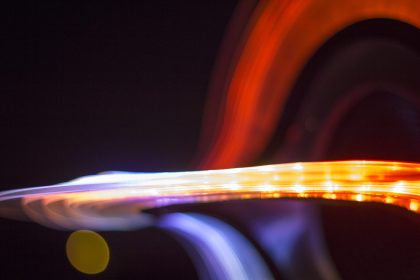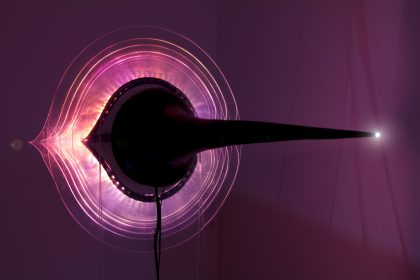(2019) Data-Driven Light & Sound Sculpture
Plastic sheets, LEDs, speaker, gravitational waves data, custom software.
“Black Hole” is a data-driven light and sound sculpture inspired by the theory and the geometry of black holes. The bending of space and time is reflected in the form of the sculpture. The terrifying boundaries of the event horizon, the point of no return, and the unbearable confinement of singularity are marked on the sculpture using an intangible medium, light. Sound is translating the distant waves of cosmos, the gravitational waves, into our human detectable domain, allowing us to sense the presence of the black hole.
In the center of the sculpture, there is a speaker surrounded by luminous bent circular plastic sheets. Behind the speaker, there is a black cone with a white light at the end. The accretion disk, the event horizon and the singularity are the fundamental structural elements of this sculpture.
Data from cosmic gravitational waves (from LIGO experiment) has been converted to sound and light for feeding the black hole’s speaker and illuminating the accretion disk.
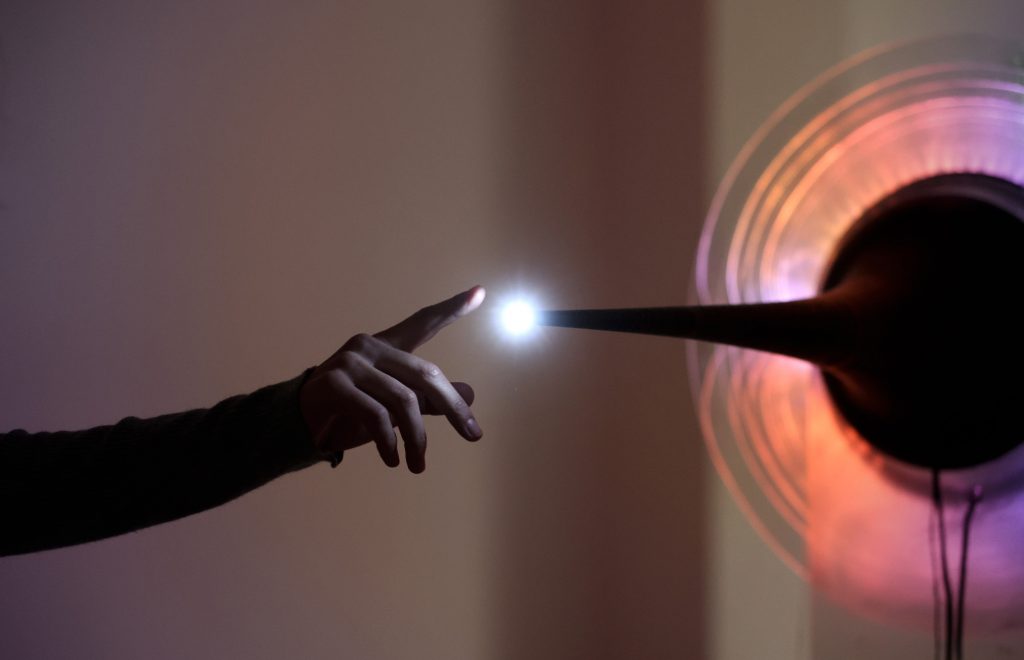
Publication
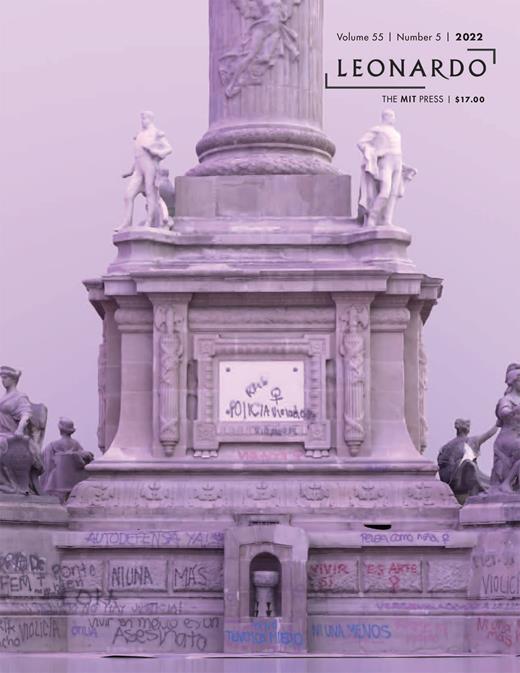
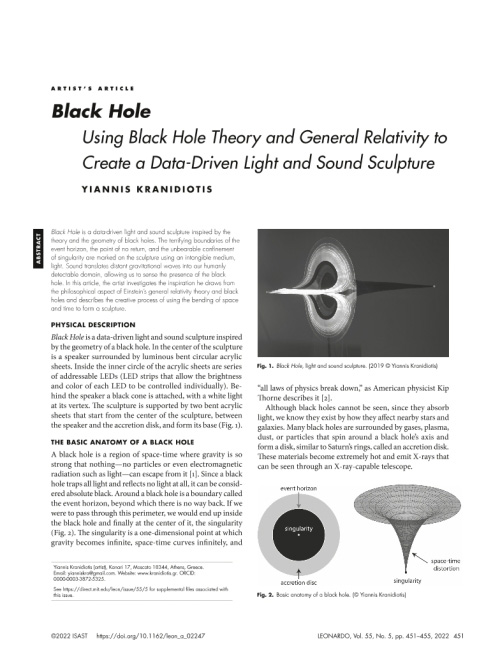
In October 2022, I published an article about my sculpture “Black Hole” in Leonardo Journal, Volume 55, Issue 5.
Yiannis Kranidiotis – “Black Hole: Using Black Hole Theory and General Relativity to Create a Data-Drven Light and Sound Sculpture”. Leonardo 2022; 55 (5): 451–455. doi: https://doi.org/10.1162/leon_a_02247
Photos
Exhibitions:
• Patchlab 2023 - SPACE/S, Kopernika 15 – Kraków, Poland (October 19, 2023)
• Cosmic Elements, Times Art Museum – Beijing, China (July 21, 2023)
• From Where I Stand, Municipal Art Gallery of Larissa G.I. Katsigras Museum – Larissa, Greece (December 10, 2021)
• ΞΟΥΘ Festival, ARTENS – Athens, Greece (December 18, 2019)
• Extending Reality, Eugenides Foundation – Palaeo Phalero, Greece (November 14, 2019)
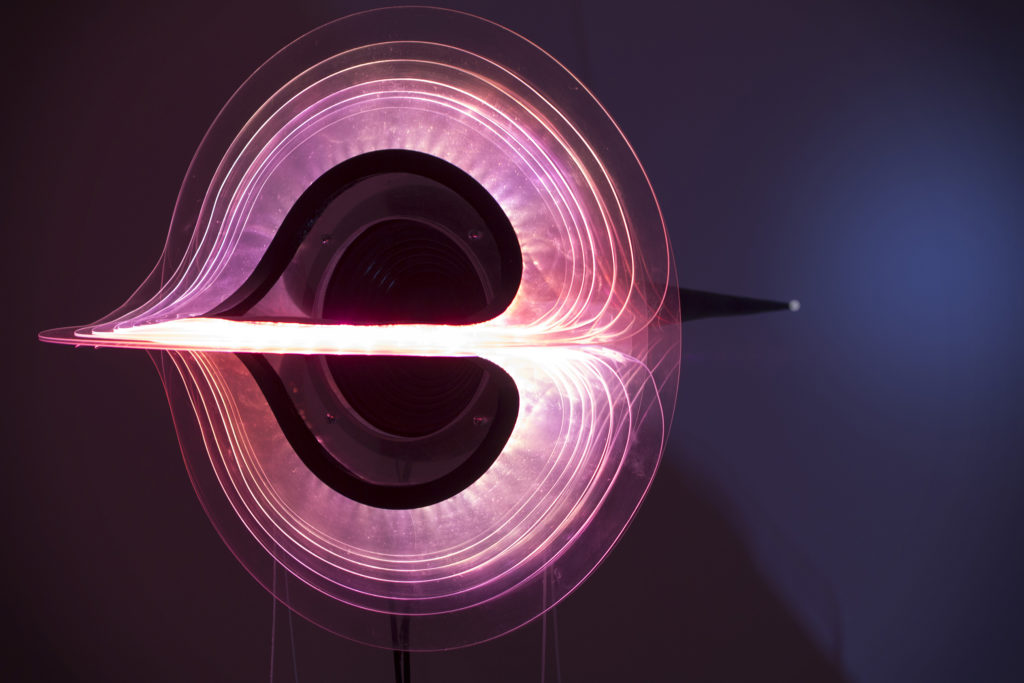
The Data
Data from the LIGO experiment, an experiment trying to detect cosmic gravitational waves, has been used and converted to sound and light for feeding the black hole’s speaker and illuminating the accretion disk. The selected data set covers 68 minutes of measurements and includes the 14 September 2015 09:50:45 UTC event when the first direct observation of gravitational waves was made. This was a significant discovery that confirmed Albert Einstein’s prediction of the existence of gravitational waves back in 1916. The 2017 Nobel Prize in Physics was awarded to Rainer Weiss, Barry Barish, and Kip Thorne “for decisive contributions to the LIGO detector and the observation of gravitational waves”.
The data were first normalized from -1.0 to +1.0 and then converted to 16KHz mono audio. Frequencies around 500Hz were removed because these are harmonics of the interferometer’s mirror suspension that resonances at ~500 Hz and are not relevant to the detection or analysis of the data. Then the whole audio was shifted down in pitch for matching the speaker’s frequency response.
Data Source: https://www.gw-openscience.org/events/GW150914/
- Observatory: LIGO Livingston Observatory, Louisiana, L1 detector.
- Start time: September 14 2015, 09:16:37 UTC
- Data Duration: 4096-second period (68min)
- Strain data at: 16,384 Hz.
- Event Detection time: September 14 2015, 09:50:45 UTC
Audio result of the sonification process of LIGO experiment data from September 14 2015, 09:16:37 UTC
Black Holes

